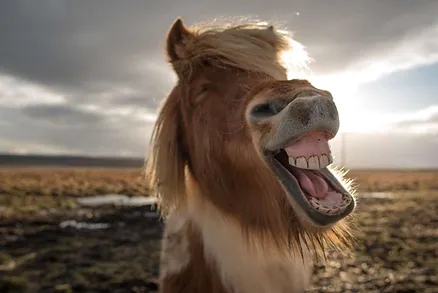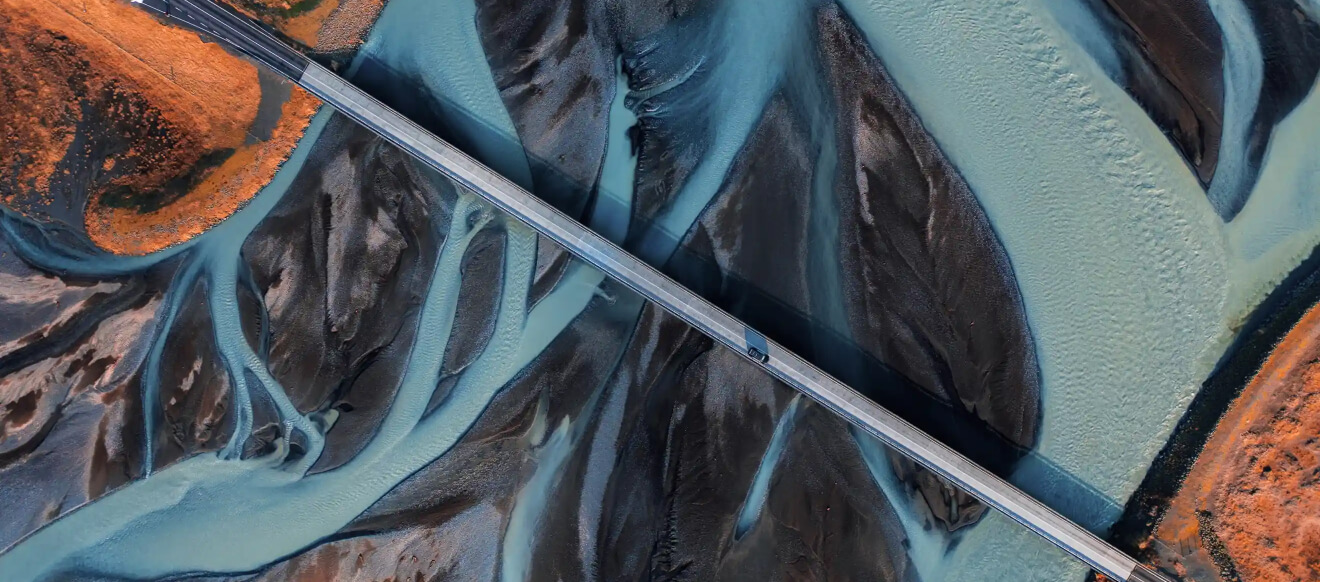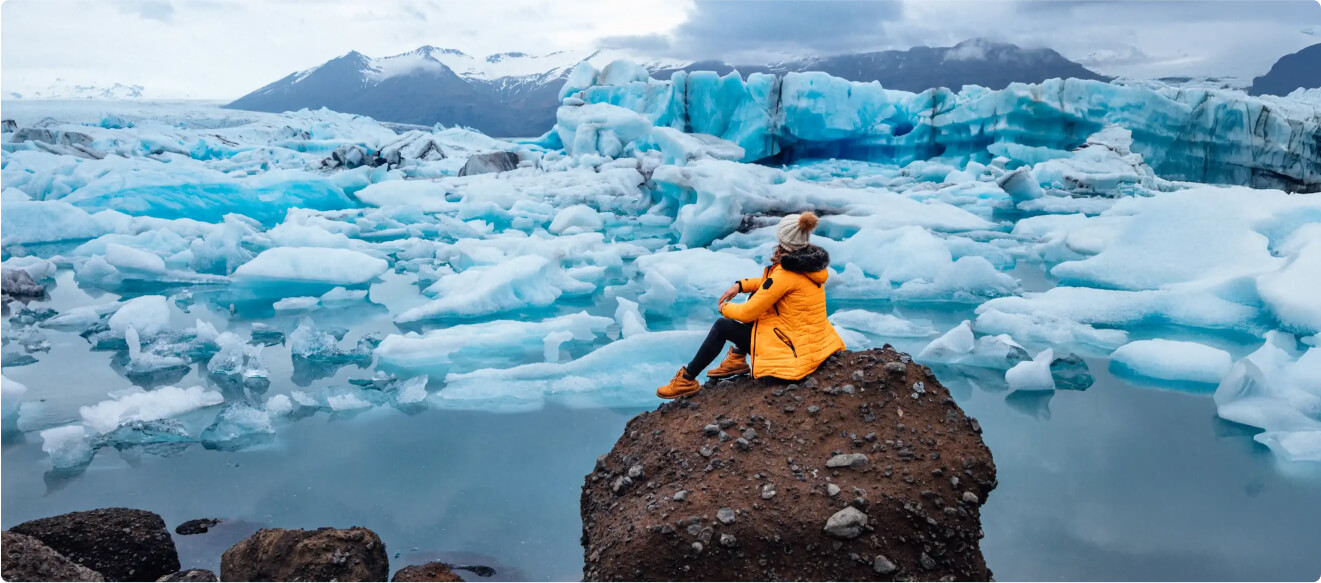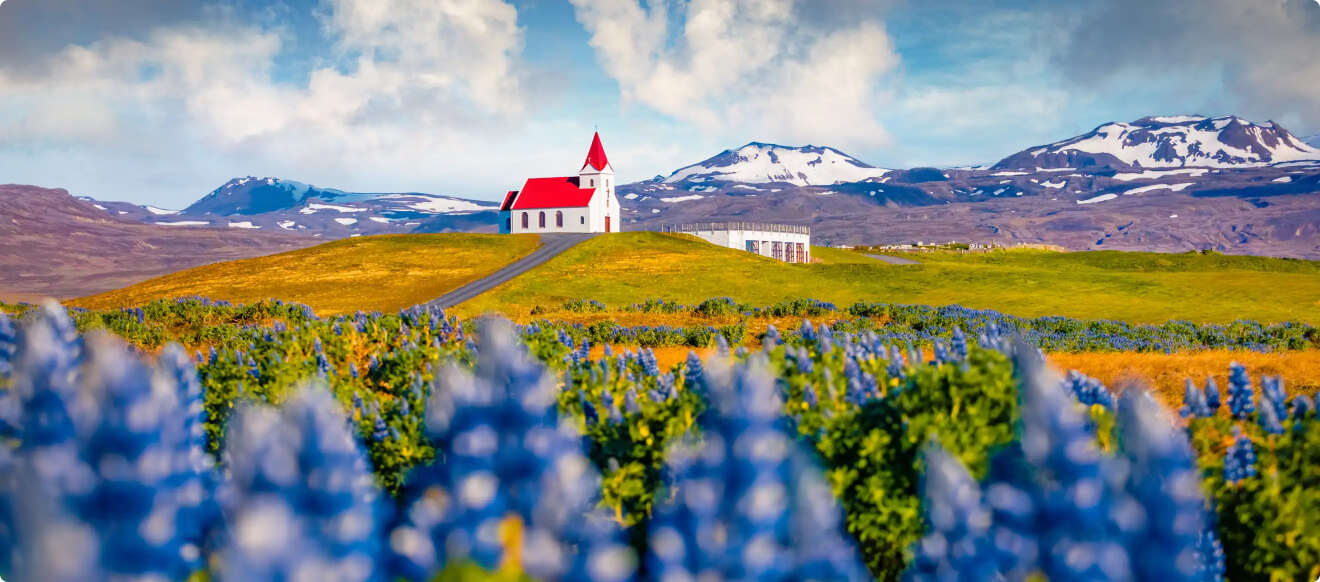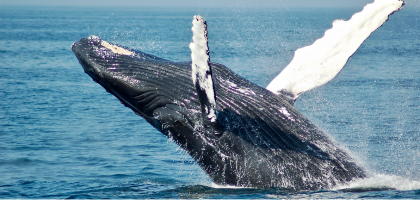Although Iceland’s wildlife is fairly limited due to the geology and the weather, the island has some very unique species. So, if you’ve ever wondered what animals live in Iceland, then stick around as we take a stroll on the wild side with all of the Iceland animals.
Learn what dangerous animals live in Iceland, what Iceland’s national bird is, whether Iceland has insects, and much, much more.
The Icelandic Fauna: What Animals Live in Iceland?
The following are some of the animals that can be spotted on the island:
Puffins
Iceland plays host to 60% of the world’s population of Puffins, so it comes as no surprise that the Puffin is Iceland’s national bird. Sadly, puffins are not permanent residents of the island.
Did you know these cuties are lovingly nicknamed the “clowns of the sea”? It's pretty much due to their odd features and colorful beaks. Iceland Puffins only come for the breeding season from May to August, so you’ll need to plan your trip accordingly.
A Few Interesting Puffin Facts
-
Baby Puffins are called Pufflings.
-
Puffins mate for life.
-
These little guys flap their wings up to 600 times per minute.
-
Their colorful beaks are actually not permanent. Their beaks change to this bright multicolor during the breeding season.
-
Puffins literally live out on the ocean, just bobbing around on the waves, and only make the land their home during the breeding season.
-
Puffins do not nest on, well, nests, they dig burrows. That’s why it’s incredibly important to keep to trails and watch where you step when going Puffin spotting. One wrong step could land you foot first in the “living room” of a Puffin.
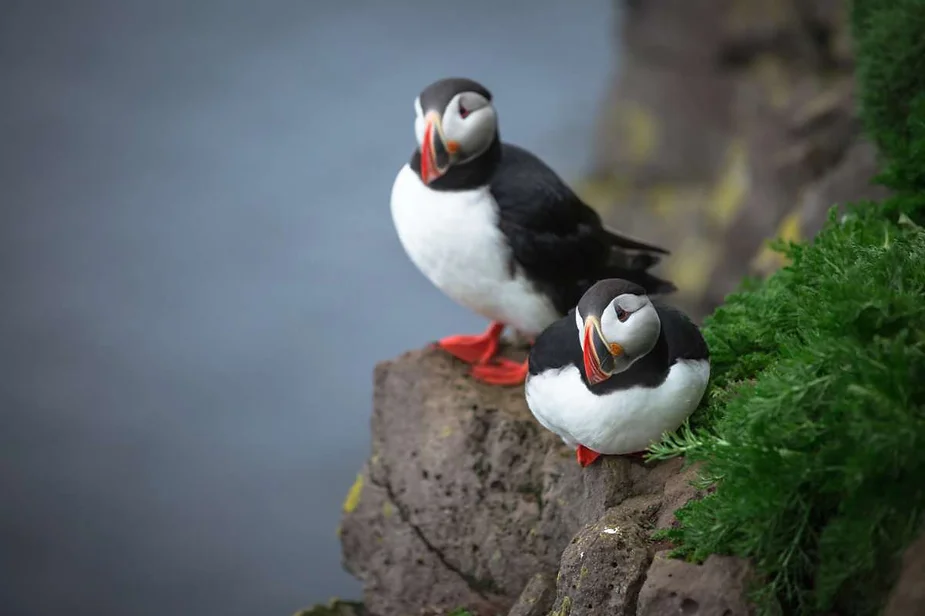
Icelandic Horse
This is one of the animals native to Iceland. In fact, it’s a horse breed especially bred on the island. The Icelandic horse is easy to mistake for ponies as they are tiny, but don’t let their size fool you. These horses are very hardy for the Icelandic weather and terrain. They are well-known for their friendly nature, and their claim to fame is an extra gait called the tölt.
This gait is said to be so smooth that it inspired a game (or rather a dare). It's called the beer tölt where a rider is told to tölt with a pint of beer in hand and see if they can do it without spilling a drop. As one of the domesticated Iceland animals, Icelandic horses can be found all over the island. Also, there are plenty of Icelandic horse riding tours available to visitors. But there is one specific place synonymous with this famous breed:
Skeidvellir. Skeidvellir is a family-run farm where the Icelandic horses are bred and trained and holds about 100 horses in its stables.
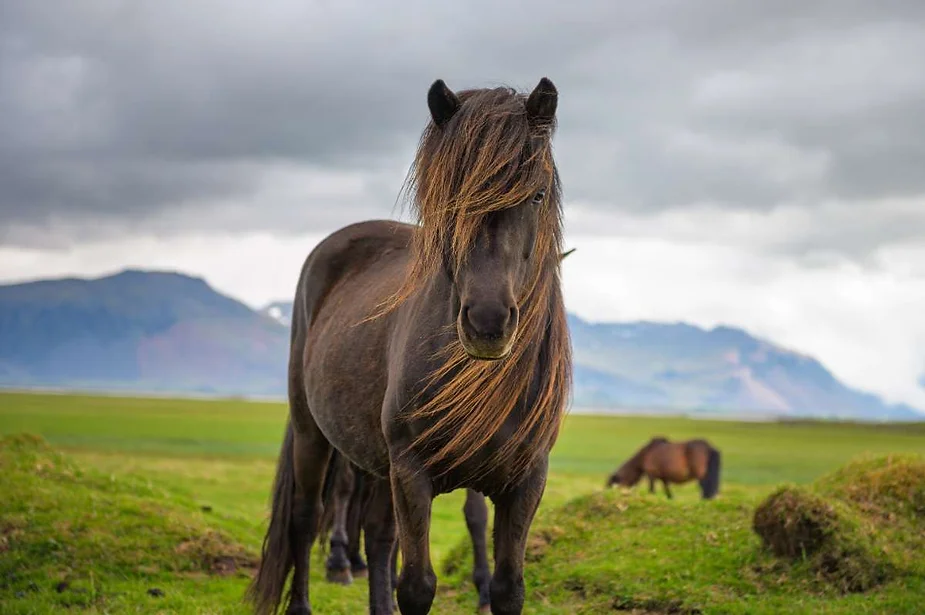
A Few Interesting Icelandic Horse Facts
-
Icelandic law actually prevents horses from being imported. It makes the Icelandic horses even more important to the locals. Horses who leave the island are not allowed to return.
-
There’s roughly one horse to every 4 people on the island.
-
These Iceland animals have very long lifespans. Not only can they be ridden past the 20-year mark, but they can live well into their 50s.
-
The coats of the Icelandic horses can change color depending on the season.
Reindeer
The reindeer in Iceland are definitely not legion. In fact, you can actually count them, which at last count showed that the island boasts around 3000 of these creatures. These guys can be spotted in different regions across the island depending on the season, as they are migratory (but only locally).
If you are coming to visit during the summertime, you’ll need to go to high, elevated areas. If you intend to visit during the wintertime, you’ll need to be near the coastal grasslands. This way, you can get a glimpse at these giant deer that holds the title of the largest land mammals in Iceland. You may also join a guided tour to increase your chances of spotting one.
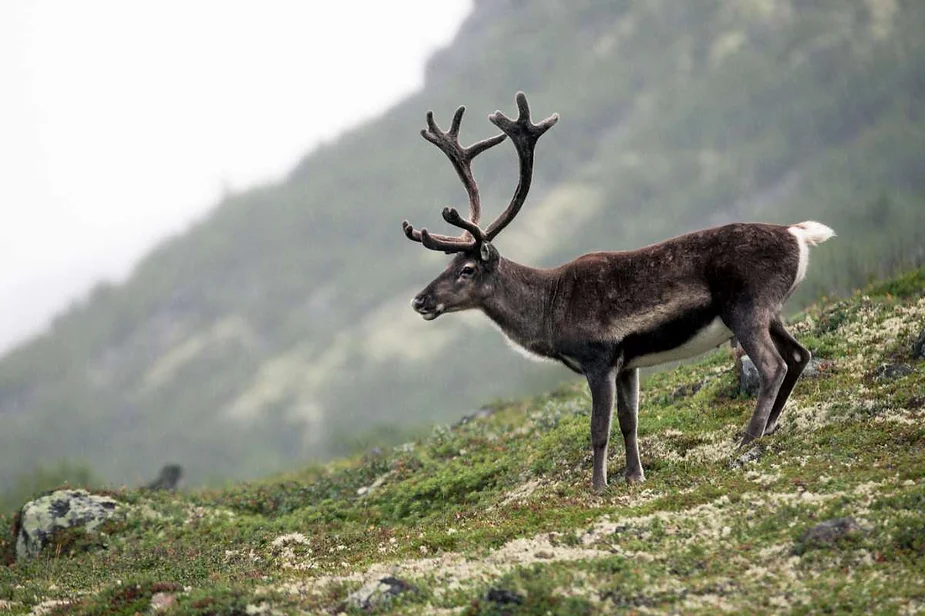
A Few Interesting Reindeer Facts
-
Both bulls and cows have antlers.
-
The population of reindeer on the island came from Norway in the 18th century with the goal of having them as livestock. The reindeer that are running wild until now are proof of the experiment’s failure.
-
For some strange reason, farmers in Iceland tend to give the reindeer the blame for overgrazing on the island, when, in fact, it has been proven that sheep are the real culprit.
-
Reindeer’s favorite food on the island is Lichen.
Seal
There are actually two species of seal that call the island their home: the Harbour Seal and the Grey Seal. Any other seal species spotted are those merely passing by on their migratory route.
There are plenty of places to spot our resident seals. Amons the most famous ones are Hvammstangi and Hvitserkur on the Vatnes Peninsula, Ytri-Tunga (a beach) on Snæfellsnes, and Eyjafjördur. The latter is the longest fjord in Iceland.
At Jokulsarlon Glacier Lagoon, they have the time of their life. Here they are somewhat protected from the Iceland predators, and they have an abundance of food. If you are planning on visiting any of their favorite hangouts on the island, these guys can be seen playing in the water or lounging on rocks, or drifting pieces of ice, so keep your eyes open.
A Few Interesting Seal Facts
-
Seals have a fat percentage of between 40-50% to protect themselves against the cold.
-
Baby seals are called pups and a seal can give birth to just one pup each year.
-
A pup relies solely on its mother’s milk for 3-4 weeks after birth.
-
Seals generally prefer colder water (hence them being happy residents of Iceland and its arctic waters).
-
Seals are actually related to bears, badgers, and skunks.
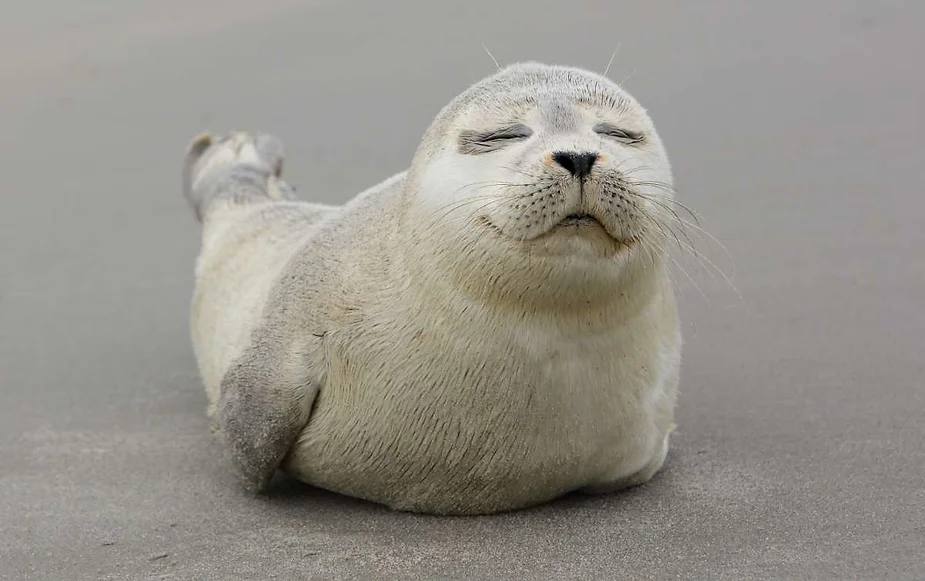
Migrating Whales
Iceland is famous for its whale population. And if whale watching in Iceland is on your bucket list, you need to ensure that you have a stop planned in Husavik (the whale capital of Iceland). And even though you’ll be able to see whales all year round, it is highly recommended that you come to visit during whale season.
Whale season is between April to September, and it’s when the Iceland waters become alive with many migratory whale species. During the whale season, you can look forward to seeing Minke Whales, Humpback Whales, Sperm Whales, Fin Whales, Blue Whales, and many more.
A Few Interesting Whale Facts
-
Humpback whales actually don’t eat for most of the year and simply live off their fat reserves.
-
There are less than 3000 Blue Whales remaining in the wild today.
-
The Antarctic Blue Whale is not only the largest of the Iceland animals but is the largest animal on the planet!
-
Whales can hold their breath for up to 20 minutes.
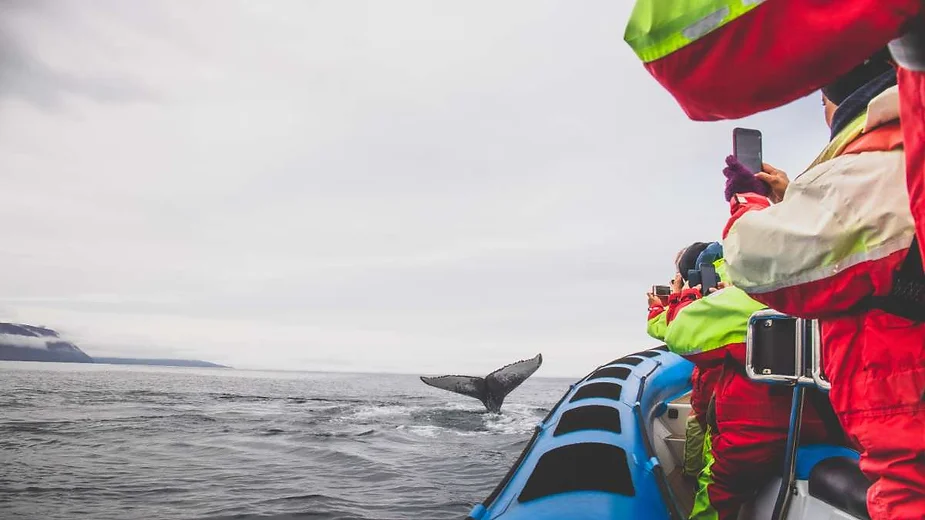
Orca
The Orca (aka Killer Whale) in Iceland is a far cry from the friendly whale in Free Willy. Even though the actual whale that starred in the movie, Keiko, came from the island.
Orcas are some of the biggest Iceland predators, and they travel and hunt in pods (groups). Orcas are limited to a very specific region in Iceland. So, if you want to spot a few of these “pandas of the sea” you’ll need to go to Snæfellsnes in the west of the island.
A Few Interesting Orca Facts
-
Orcas (aka Killer Whales) are actually the largest member of the dolphin group.
-
The females go through menopause and can live up to 80 years.
-
Orca men are “mommy’s boys”. They never leave their mother’s side throughout their life. Studies have shown that if the mother should die after the son has reached his 30s, he is also likely to die within a year after her death.
-
A female orca only gives birth to one calf every 5 years.
-
Orcas can’t smell. They have no smelling organs nor a part of the brain dedicated to the sense of smell.
Arctic Fox
The Arctic Fox is another one of the animals native to Iceland and one of Iceland’s tundra animals. This is probably the cutest full-grown predator you will ever see in your life. This small little critter with its thick, furry white coat looks more like a Pomeranian than a fox.
But just as with the Icelandic horses, these Iceland animals are hardy and can brave Arctic temperatures of -14 degrees Celsius. Although it is possible to spot the Arctic Fox all over the island, it is fairly rare. If you want to see this furry carnivore, your best bet will be Hornstrandir Nature Reserve. This is because the reserve has been left fairly untouched and the winds blow plenty of food to the shores.
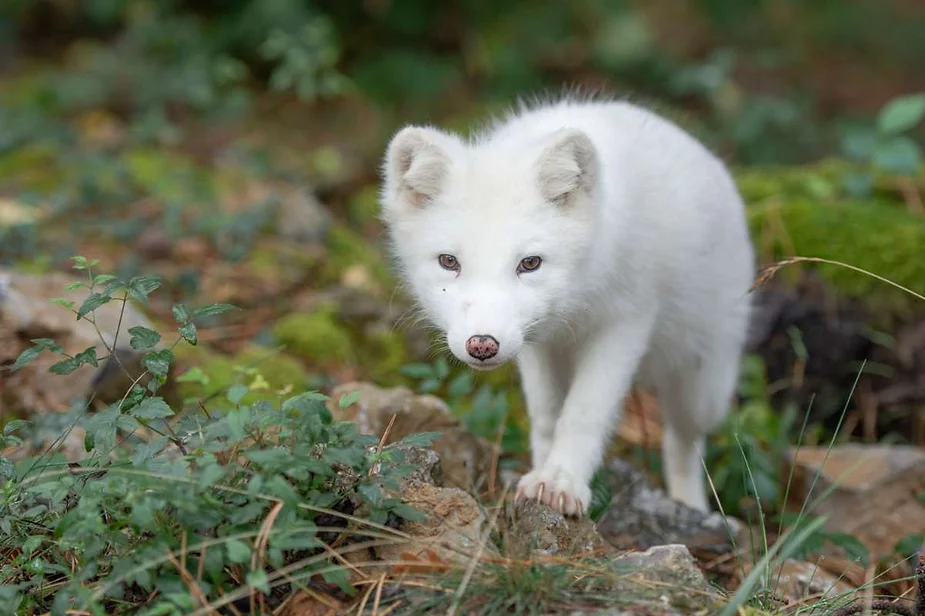
A Few Interesting Arctic Fox Facts
-
Arctic Fox cubs are born blind just like dogs and cats and only get their vision from 2 weeks of age.
-
Arctic Fox cubs are self-sufficient from four months old.
-
For some strange reason, these Iceland animals are scared of fences. Even though they can easily get through them with no hassles and without getting hurt, they avoid them at all costs.
-
The Arctic Fox can travel extremely long distances – up to 150 kilometers a day!
-
These Iceland animals, just like the Puffins, mate for life.
Ways to See Iceland’s Animals
There are plenty of ways to see Iceland’s animals. Just keep in mind that things such as whale watching and Puffin spotting are seasonal. You’ll need to plan your trip based on what the best time to visit Iceland will be for you. Some of the ways you can go Iceland animal viewing are:
Via a Tour
Whether it is a boat tour or a bus tour, these group tours are your best bet to see specific Iceland animals. These tours are led by professional, local, and highly experienced guides. These can range from private tours to public group bookings.
By Chance
It’s fairly easy to spot some of the Iceland animals whilst out and about on the island. You might be at the market at the harbor when a whale breaches. You might even be out hiking in the Westfjords of Iceland when you see the Puffins on the Latrabjarg cliffs.
An Iceland Animal Road Trip
Whether you’re a big animal lover or want to expand on your photography portfolio, a dedicated Iceland animal road trip is a guaranteed way to take in all the Iceland fauna spots. Simply rent a car in Iceland, grab a map and get going!
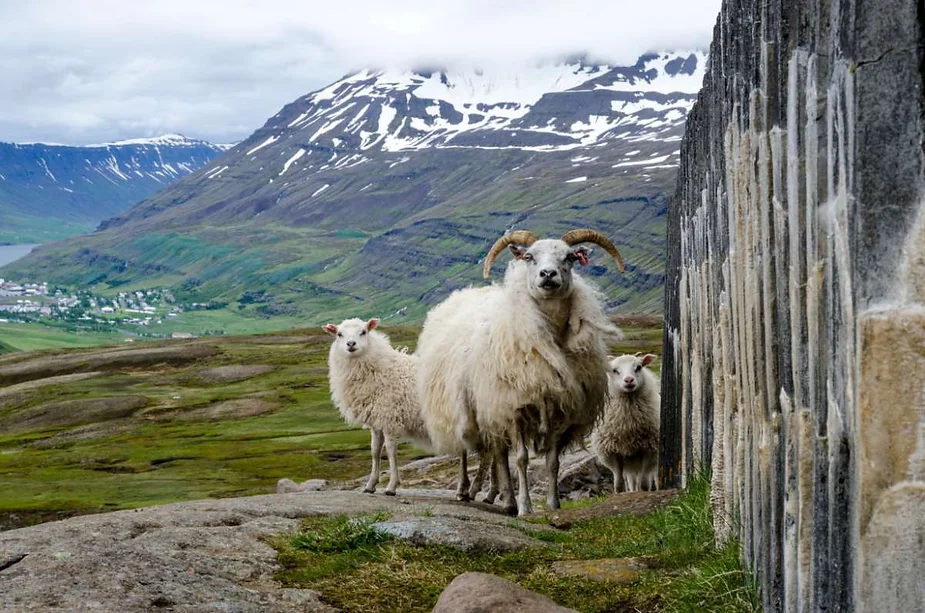
Iceland Animals FAQs
These are some of the most frequent questions we get about Iceland’s fauna:
Does Iceland have insects?
Despite the Iceland weather, one can find over 1000 types of insects on the island. One of the most prominent is the Midge, named after a famous lake in Iceland: Myvatn (“Midge Lake” when translating directly).
What is the only mammal native to Iceland?
The only mammal that is an Iceland native, born and bred, is the Arctic Fox. Indeed, although the Icelandic Horse is now a native mammal in Iceland, its initial origins were not. These trace back to when the Nordic Vikings started bringing horses to Iceland from Norway.
Are there monkeys in Iceland?
There are no monkeys in Iceland. Some people get this confused since the island has so many hot springs and there are so many cute images of snow monkeys lounging around in hot springs. But these monkeys are actually photographed in Japan.
Are there penguins in Iceland?
No, there are no penguins living in Iceland.
Are there bears in Iceland?
No, there are no bears in Iceland. It’s easy for people to get confused since bears are found in other Arctic regions such as Canada and Alaska.
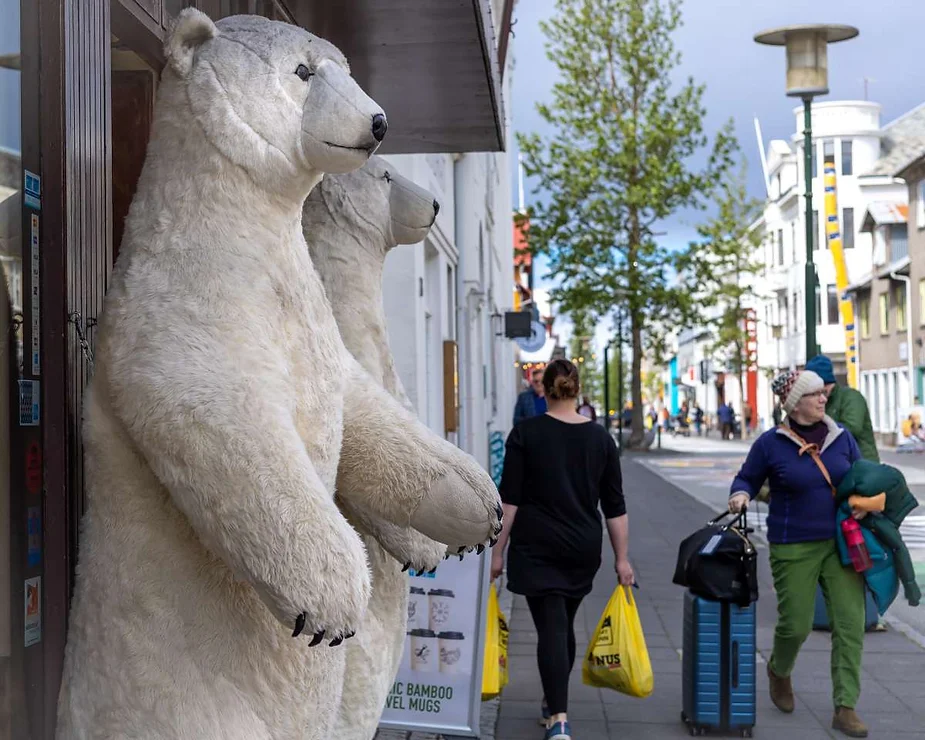
Does Iceland have Polar Bears?
The only Iceland's native land mammal is the Arctic fox. While not indigenous, polar bears sometimes arrive from Greenland, but they don't permanently reside in Iceland.
Are there wolves in Iceland?
Officially, there are no wolves in Iceland. But the situation surrounding these Iceland animals is quite strange.
In the 9th century wolves freely roamed the island and that’s why you’ll find plenty of wolves in Icelandic mythology. And although it is officially a wolf-free nation today, three wolves were spotted in east Iceland in 2018.
Now that you know all about Iceland’s wildlife and how to view them, it’s time to start planning your Iceland animals trip!




